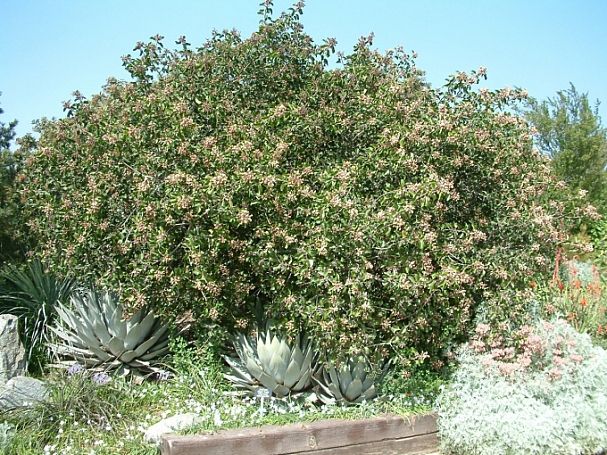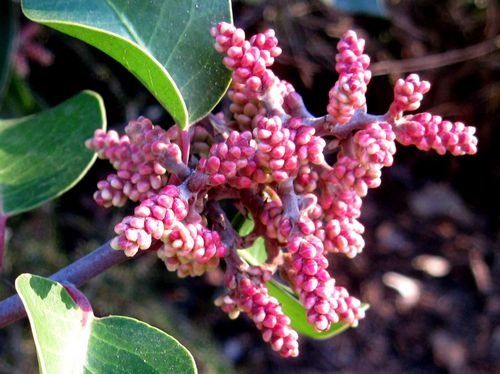Rhus ovata: Unveiling the Beauty of Sugar Bush

Rhus ovata, commonly known as sugar bush or sugar sumac, is a captivating evergreen shrub native to the coastal regions of California and Baja California.
Renowned for its glossy foliage and ornamental berries, this species holds both ecological and cultural significance in its native range.
In this comprehensive article, we will delve into the botanical intricacies, habitat preferences, life cycle, ecological importance, conservation status, and care guidelines for Rhus ovata.
Botanical Description
Rhus ovata is characterized by its dense, rounded growth habit and leathery, dark green leaves that are aromatic when crushed.
The leaves are composed of multiple leaflets arranged in an alternate pattern along the stems. In spring, sugar bush produces clusters of small, inconspicuous yellow-green flowers that give way to clusters of spherical berries in shades of red or purple.
The berries are highly attractive to birds and wildlife, contributing to the plant's ornamental value and ecological significance.
Habitat and Distribution
Life Cycle and Phenology
As an evergreen shrub, Rhus ovata maintains its foliage year-round, providing year-round interest in the landscape.
In spring, new growth emerges, and the plant may produce clusters of small flowers.
The berries develop over the summer months and persist into fall and winter, providing a valuable food source for birds and other wildlife.
While sugar bush may experience some leaf drop in response to drought or stress, it typically retains its leaves throughout the year, adding texture and color to the landscape.
Ecological and Cultural Importance
Rhus ovata plays a vital ecological role as a habitat plant, providing food and shelter for birds, mammals, and insects.
The berries are particularly attractive to birds such as thrashers, towhees, and quail, which feed on them throughout the year.
Additionally, sugar bush has cultural significance as a native California plant, valued for its beauty and resilience in garden and landscape settings.
It is often used in native plant landscaping, wildlife gardens, and drought-tolerant landscapes, where it adds texture, color, and habitat value.

Caring for Rhus ovata
Sunlight
Plant sugar bush in a location that receives full sun to partial shade.
While it can tolerate some shade, full sun encourages the best growth and flowering.
Watering
Provide regular water during the establishment period, then gradually reduce watering once the plant is established.
Sugar bush is drought-tolerant once established and only requires occasional watering during periods of extended drought.
Soil
Plant in well-drained, sandy or rocky soil with a neutral to slightly acidic pH.
Avoid planting in heavy clay soils, as these can lead to root rot and other issues.
Mulching
Apply a layer of organic mulch around the base of the plant to conserve moisture and suppress weed growth.
Keep the mulch several inches away from the stems to prevent rot.
Pruning
Prune sugar bush as needed to maintain its desired shape and size.
Remove dead or damaged branches, as well as any suckers or vigorous shoots that may emerge from the base of the plant.
By following these care guidelines, you can cultivate healthy and vibrant Rhus ovata plants in your garden or landscape, enhancing the beauty and ecological value of your outdoor space.
Whether used as a focal point in a native plant garden or as a backdrop in a mixed border, sugar bush is sure to captivate with its glossy foliage and ornamental berries throughout the year.
Leave a Reply
You must be logged in to post a comment.